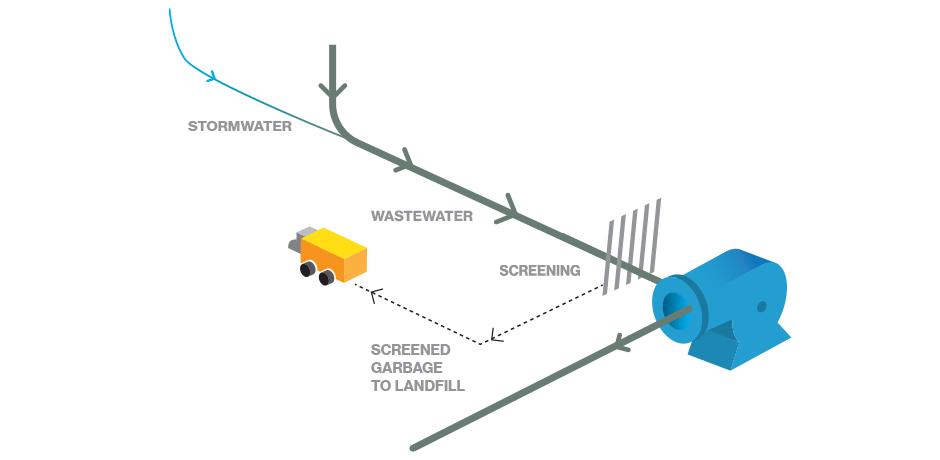Key Obstacles in Urban Waste Water Treatment Approaches
Key Obstacles in Urban Waste Water Treatment Approaches
Blog Article
Strategic Approaches to Enhance Drainage Therapy Efficiency and Lessen Environmental Effect
In the world of waste water treatment, the mission for enhanced effectiveness and lowered environmental effect is a perpetual obstacle that demands calculated options. The integration of advanced treatment technologies, energy-efficient procedures, resource recuperation techniques, enhanced nutrient elimination methods, and clever monitoring and control systems represents a complex framework for dealing with these pushing problems.
Advanced Treatment Technologies
Advanced membrane layer purification systems have revolutionized innovative wastewater treatment procedures, considerably boosting the elimination of pollutants. These cutting-edge systems work by compeling water through a semi-permeable membrane, properly separating pollutants from the water stream. The membrane's microscopic pores catch contaminants such as microorganisms, viruses, and put on hold solids, permitting just purified water to pass through. This innovation has actually verified to be very effective in getting rid of a large range of contaminants, consisting of drugs, hefty metals, and organic compounds, which are frequently challenging to get rid of via conventional treatment techniques.
Moreover, membrane layer filtering systems supply numerous benefits over standard therapy strategies. They call for much less space, produce higher-quality effluent, and are more resistant to variations in influent water quality. Additionally, these systems are extremely versatile and can be quickly incorporated into existing therapy plants or utilized as standalone units for decentralized applications. As the demand for clean water continues to rise, the fostering of advanced membrane filtration innovations is necessary to make sure reliable and sustainable wastewater treatment techniques.
Energy-Efficient Processes
The integration of energy-efficient processes in wastewater therapy systems is vital for optimizing resource use and decreasing functional prices. One key technique to enhancing power efficiency in wastewater treatment is the usage of sophisticated oygenation systems, such as great bubble diffusers or surface area aerators, which can boost oxygen transfer performance and reduce energy usage.
Moreover, maximizing procedure control and automation via the use of innovative sensors and checking systems can improve total power effectiveness by readjusting operations in real-time based upon actual demand and conditions. Carrying out energy audits and regularly keeping track of power efficiency indications are essential practices to determine areas for enhancement and track energy-saving efforts properly. On the whole, the fostering of energy-efficient procedures in wastewater treatment not just benefits the environment but also contributes to long-term expense savings and functional sustainability.
Resource Recovery Strategies
With an emphasis on maximizing source use and sustainability in wastewater treatment systems, the implementation of source recuperation approaches becomes a pivotal aspect in boosting functional performance. Source healing techniques in wastewater therapy entail the recognition and extraction of valuable resources from the waste stream, consequently transforming what was when considered waste right into a useful asset. By applying resource recuperation methods such as nutrient removal and healing, power generation from raw material, and the manufacturing of recyclable water, wastewater therapy plants can lessen environmental influence while making the most of efficiency.

Enhanced Nutrient Removal Techniques
Implementing advanced nutrient removal techniques is important for optimizing the effectiveness of wastewater treatment systems. One of the key strategies utilized for enhanced nutrient elimination is the procedure of biological nutrient elimination (BNR), which involves the removal of nitrogen and phosphorus via biological procedures.

Along with BNR, advanced therapy methods such as membrane layer bioreactors (MBRs) and constructed wetlands can additionally be used to enhance nutrient removal performance. MBRs utilize membranes to accomplish top notch effluent criteria by successfully getting rid of nutrients and put on hold solids. Constructed wetlands simulate all-natural wetland processes to eliminate nutrients via plant uptake, microbial activity, and sedimentation. By integrating these advanced nutrient removal strategies right go to these guys into wastewater treatment markets, towns and systems can properly decrease nutrient pollution and safeguard the setting.
Smart Surveillance and Control Systems
Utilizing advanced innovation, the assimilation of clever surveillance and control systems changes the operational efficiency of wastewater therapy centers. These systems integrate advanced sensing units and data analytics to constantly keep track of key criteria such as pH levels, turbidity, liquified oxygen, and flow rates in real-time. By gathering and evaluating this data, drivers can acquire valuable understandings right into the performance of the therapy processes, enabling aggressive modifications to maximize treatment performance.
Smart monitoring and control systems additionally support remote tracking capabilities, enabling drivers to access real-time information and control functions from off-site places. This remote ease of this content access enhances functional flexibility and responsiveness, allowing swift interventions in instance of system malfunctions or changes in influent top quality. In addition, the predictive upkeep capabilities of these systems aid prevent tools failures and reduce downtime, inevitably enhancing the general integrity of wastewater therapy operations (Waste Water Treatment).
Final Thought
In conclusion, tactical strategies such as innovative treatment technologies, energy-efficient procedures, resource healing strategies, improved nutrient elimination strategies, and smart tracking and control systems play a vital role in boosting wastewater treatment performance and reducing ecological effect. By applying these methods, wastewater therapy plants can improve their general efficiency, minimize energy consumption, recoup important resources, and ensure compliance with environmental laws. These approaches are important for efficient and sustainable wastewater management techniques.

In conclusion, strategic approaches such as sophisticated therapy innovations, energy-efficient procedures, resource recovery techniques, improved nutrient elimination techniques, and clever monitoring and control systems play a crucial function in enhancing wastewater therapy performance and minimizing environmental effect.
Report this page